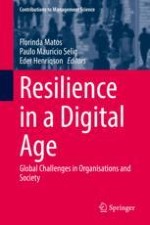2022 | OriginalPaper | Chapter
17. The Case of Digitalisation in the Brazilian Development Bank (BNDES): How Brazilian Culture and the Institutional Values Influence the Process
Authors : Helena Tenorio Veiga de Almeida, Ricardo Luiz de Souza Ramos
Published in: Resilience in a Digital Age
Publisher: Springer International Publishing
Activate our intelligent search to find suitable subject content or patents.
Select sections of text to find matching patents with Artificial Intelligence. powered by
Select sections of text to find additional relevant content using AI-assisted search. powered by
